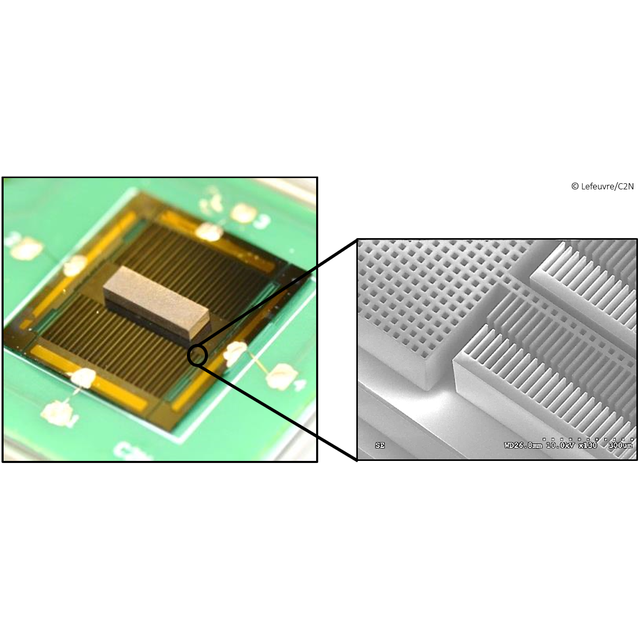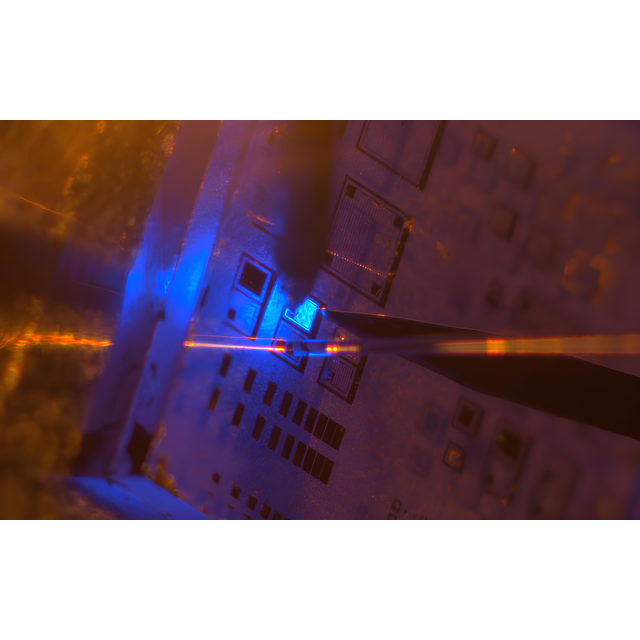This article was first published in the CNRS – La lettre Innovation (in French) in October 2018, under « Brevets et licences ».
The microsystem developed and fabricated at the Centre de Nanosciences et de Nanotechnologies1, in collaboration with the Laboratoire mécanique des sols, structures et matériaux2, is able to harvest mechanical energy from the heartbeat. This patented device could be used to power a pacemaker.
A pacemaker autonomous in energy? This is possible if it goes together with a device capable of delivering a power of a few microwatts without the need to be replaced or recharged. All in a volume small enough to fit in the capsule of a pacemaker. A promising solution has been developed by a team from the Centre de Nanosciences et de Nanotechnologies1 and the Laboratoire mécanique des sols, structures et matériaux2: a micro electromechanical system (MEMS) capable of harvesting mechanical energy from the heartbeat. The researchers have published3 the results of their work, which has also resulted in a filed patent4.
To capture the mechanical energy of the heartbeat - the acceleration of the walls of the heart with each contraction or dilation - the researchers chose to use a bistable structure: a micro-beam pre-shaped by ad hoc combination of vibration modes, which switches between two stable states when it receives mechanical energy. This type of device is well adapted to heartbeats, characterized by a variable acceleration spectrum at very low frequencies (1-40Hz). But another difficulty had to be solved: the influence of gravity. Depending on the orientation of the movement in the gravitational field, it can limit the sensitivity of the sensor, which can no longer detect the accelerations of the walls of the heart. The researchers have found a solution by adding to the device two springs, made of silicon at the same time as the rest of the MEMS, and whose function is to compensate the effects of gravity. The sensitivity is then sufficient in all directions. The transformation of the mechanical energy into electrical energy, usable by the pacemaker, passes through a capacitive micro-transducer (a capacitor whose distance between the armatures varies).
To realize this innovative MEMS, the Center for Nanoscience and Nanotechnology has developed a dedicated silicon-on-glass technology, designed to be industrializable. These researchers have been working for several years in collaboration with leading Companies in the field of implantable medical devices. "Discussions are underway to test with them the new device, which marks a significant advance in terms of miniaturization," says Elie Lefeuvre, Professor of University Paris-Sud at Centre de Nanosciences et de Nanotechnologies. But other applications are envisaged, in connected objects and autonomous sensor networks.
1 Centre de nanosciences et de nanotechnologies (CNRS/Université Paris-Sud)
2 Laboratoire mécanique des sols, structures et matériaux (CNRS/CentraleSupélec)
3 Nonlinear electrostatic energy harvester using compensational springs in gravity field
Bogdan Vysotskyi, Denis Aubry, Philippe Gaucher, Xavier Le Roux, Fabien Parrain et Elie Lefeuvre. Journal of Micromechanics and Microengineering, Volume 28, Number 7(1) (2018). DOI : http://iopscience.iop.org/article/10.1088/1361-6439/aabc90
4 Patent FR 30239993A1 « Dispositif électronique autonome à alimentation par transduction électrostatique produite par une capacité variable », in co-ownership CNRS/Université Paris Sud, published on January 1st, 2016.
- Contact : Elie Lefeuvre, Professor of University Paris-Sud at C2N
Photo: Lefeuvre/C2N









